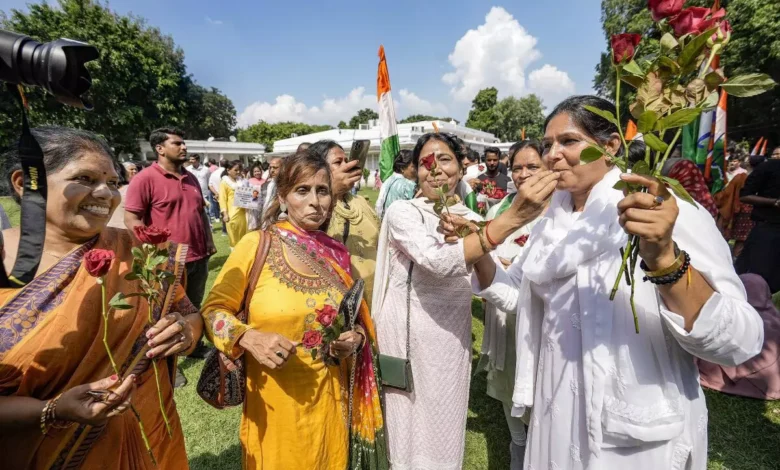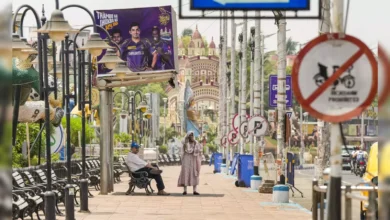Women’s reservation bill gets green light from cabinet after 13-year wait
Since 1996, multiple governments have tried to pass a Bill for a 33 percent women's reservation in the Lok Sabha and state Assemblies. But, due to a lack of political will and consensus among major players, these attempts have not succeeded.

In a historic development in Indian political history, the Women’s Reservation Bill, which aims to allocate 33% of parliamentary and state legislative seats to women, has received the Union Cabinet’s approval under the leadership of Prime Minister Narendra Modi.
A Premature Announcement and Unwavering Support
Union Minister Prahlad Patel caused a stir by prematurely announcing the cabinet’s approval on the social networking site X post, subsequently removing it. Nonetheless, credible sources have confirmed the cabinet’s support for this groundbreaking bill.
The Call for Action Grows Louder
The call for action on this legislation has gained momentum as the special parliamentary session began. Lawmakers from various quarters have urged the long-overdue introduction of the Women’s Reservation Bill. Even the opposition party, Congress, has joined the chorus, with senior leader Jairam Ramesh stating, “The Congress Working Committee has demanded that the Women’s Reservation Bill must be passed during the Special Session of Parliament.”
The Bill’s Imminent Introduction: Although the bill is not immediately on the special session’s agenda, all indications suggest its imminent introduction to Parliament.
Understanding the Women’s Reservation Bill: A Closer Look
The Women’s Reservation Bill seeks to ensure that women hold one-third of all seats in the Lok Sabha and state legislative assemblies. Strengthening its mission, the bill also mandates that one-third of these reserved seats be occupied by women from Scheduled Castes and Scheduled Tribes. Furthermore, these reserved seats will rotate among different constituencies within the state or union territory.
A Noteworthy Sunset Clause: A noteworthy clause in the bill stipulates that this reservation for women will automatically dissolve 15 years after the Amendment Act takes effect, representing both progress and a challenge for further development.
Historical Precedents: The Struggle for Women’s Representation
The quest for women’s reservation is not a recent phenomenon. It has been a point of contention for many years, even sparking debates in the Constituent Assembly post-independence.
- The Government of India Act of 1935: A Significant Step The Act marked a significant development by reserving 41 seats for women in provincial legislatures and limited seats in Central Legislatures. Laura Dudley Jenkins, in her paper ‘Competing Inequalities: The Struggle Over Reserved Legislative Seats for Women in India,’ elaborates on this history. She highlights that in the last decades of colonial rule, Britain granted Indians limited rights to serve as representatives in legislative bodies. This led to the emergence of proto-feminist ‘All-India’ women’s groups, who diligently worked to influence new policies.
- The Constituent Assembly Debate: Early Controversy Although the issue of women’s reservation was hotly debated in the Constituent Assembly, it was ultimately considered unnecessary. The prevailing argument was, why seek special provisions when a democratic setup and universal franchise would ensure representation for women
- Intra-Movement Disagreements: Women’s Organizations’ Rejection of Reservation Even within women’s organizations, the reservation proposition sparked controversy. Influential leaders like Sarojini Naidu argued against it, believing that demanding preferential treatment implied admitting inferiority. Sarojini Naidu once declared, “We are not fragile, fearful, mousy women. We admire the fearless Savitri and revere Sita’s power to defy disbelief in her fidelity.”
- A Transformative Perspective: The National Perspective Plan In 1987, the government established a 14-member committee, led by Margaret Alva, with the mission to “Liberate Indian women from the clutches of social oppression.” The committee presented a transformative ‘National Perspective Plan for Women 1988-2000 (NPP)’ to the Prime Minister, comprising 353 recommendations, including seat reservations for women in elected bodies.
- Constitutional Amendments: The 73rd and 74th Amendment Acts Two groundbreaking constitutional amendments mandated one-third of all seats for women in Panchayati Raj institutions and in the offices of the Chairperson, making their mark at all levels of these institutions and in urban local bodies.
- First Bill Proposal in 1996: A Sign of Progress In 1996, the Women’s Reservation Bill made its debut in the Lok Sabha under the Deve Gowda government. It was introduced as the 81st Constitutional Amendment Bill on September 9, 1996.
- A Resurgence in 2010 and Beyond: The Bill’s Journey Continues In 2010, the Women’s Reservation Bill received approval from the Rajya Sabha as the Constitution (108th Amendment) Bill. However, it faced challenges in the lower house. Now, 13 years later, the bill has experienced a revival with the Union Cabinet’s approval, setting the stage for another round in the parliamentary arena.
A Pledge Fulfilled: The BJP’s Commitment
The BJP prioritized women’s reservation in its 2014 and 2019 Lok Sabha election manifestos, committing to establish a 33% reservation in parliamentary and state assemblies through a constitutional amendment.
Cabinet Approval and Its Significance
The Indian Cabinet’s approval of the Women’s Reservation Bill represents a major milestone in advancing female participation in politics. It brings us closer to the ideal of a truly democratic society where voices are balanced and diverse.
Now Remains the Lok Sabha Approval
With the Cabinet’s approval, the bill is one step closer to becoming law. The final hurdle lies in the Lok Sabha, where it must pass with a two-thirds majority. The hope is that this significant step will pave the way for more inclusive, representative governance in India.
Please, also have a look into : Indian Women’s Cricket Team wins first-ever gold in Asian Games 2023



